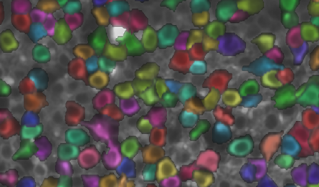NEW YORK – A treasure map is helpful not only if it shows both an X marking the spot to dig, but also some context for how to get to X. Now, scientists at Columbia’s Zuckerman Institute have discovered key insights into how periods of rest help brain cells fill in the surroundings around important spots when making mental maps. To do so, the researchers monitored, in unprecedented detail, what happens in the brain of a mouse both as it explores a new place and as it reposes afterwards. Led by postdoctoral researcher Andres Grosmark, PhD, in the Losonczy lab, the new research appeared Oct. 18 in Nature Neuroscience.
“A better understanding of how the brain creates its mental maps of the world could help inform research into how memory is disrupted in disorders such as schizophrenia and Alzheimer's disease,” said Attila Losonczy, MD, PhD, a principal investigator at Columbia’s Zuckerman Institute and a professor of neuroscience at Columbia’s Vagelos College of Physicians and Surgeons. “This can in turn help guide experiments with potential therapies for memory-related symptoms of these ailments.”
In the new study, researchers investigated the hippocampus, the brain's memory center. Previous research suggested that some cells in the hippocampus, called place cells, can encode memories of important locations when an animal is exploring a new place.
"Place cells create something like a movie as an animal moves around,” Dr. Grosmark said. “Different cells turn on in different locations, creating these successive frames, each one a little bit different from the one before, to represent a space as an animal moves around."
Prior work also proposed these memories get reinforced into stable maps of the world during periods of rest.
The brain replays the movie that was recorded as the animal moved around, as if the animal is mentally traveling through the environment
"The brain replays the movie that was recorded as the animal moved around, as if the animal is mentally traveling through the environment," Dr. Grosmark said. But much remained unknown about the timeline and details of how this happens. This is partly because of the most common method scientists use to analyze the hippocampus, electrophysiology, which inserts electrodes near cells to record their electrical activity. Because the brain tends to shift a little over time, recording the exact same cells from day to day to monitor long-term memory formation is challenging.
In the new study, Dr. Grosmark and his colleagues combined electrophysiology with calcium imaging methods, in which mice are genetically modified so that their brain cells quickly change color when active. This method lets the scientists follow cells' activity for longer times than would be possible with electrophysiology. The scientists monitored the formation and replay of memories in the hippocampus over a groundbreaking range of timescales, from tens of milliseconds to two weeks, both when the rodents were actively exploring an environment and during resting times in between.
Place cells are sequentially active at particular locations as a mouse runs through the environment - each tick on the graph corresponds to the activity of a particular cell on one of 7 locations shown trasversally. Cells are color-coded by preferred place selectivity.
"Previous work showed that memory replay lasts for a few hours after memories are formed," Dr. Grosmark said. "We were able to show that the reactivation of specific memories lasts at least 24 hours after an experience, and probably more. That's in line with previous thinking that the process of consolidating memories tends to take days to weeks."
This work revealed key differences between the activity of the hippocampus during active and passive behavior. As mice explored their environment, place cells that turned on near important locations — spots where they could find water— were more active. But afterward, when the mice rested, the brain tended to activate a more balanced set of place cells representing locations both near and far away from water locations.
By examining the content of this post-experience reactivation, Dr. Grosmark and his colleagues were able to predict days into the future which elements of the mental map would remain stable and which would change. Surprisingly, they found that this post-learning reactivation predicted the emergence of mental maps that represented the entire environment evenly, rather than just the portions which the mice found the most rewarding.
These two modes seem to help the brain form a more sophisticated map of the environment. Based on these results, while an animal’s behavior and brain activity may be narrowly focused on important locations during exploration, replay during rest states seems to help fill in the rest of the map to provide useful context.





0 Comments
please do not spam link